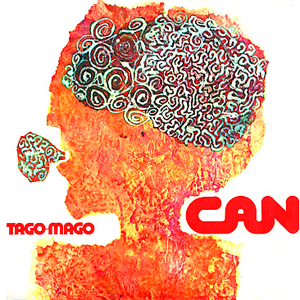
Acumular y acumular discos (y casi cualquier cosa en general) a un nivel que no se podrá apreciar ni la mitad de lo acumulado es algo frecuente entre aquellos que disfrutan del mundo de la música. Me ha pasado con mi colección física y pues no digamos con la digital. Por otro lado, el utilizar Spotify parece estarme ayudando a tener acceso a un amplio universo musical y tener cierto control de lo que escucho sin tener que sobrecargar la memoria de mi computadora con música que a lo mejor nunca llegaré a escuchar. Armo playlists con nuevos lanzamientos y reediciones; álbum escuchado en su totalidad es álbum borrado de la playlist, y solo aquellos que lograron llamar mi atención son descargados y trasladados a mi iPod para una mejor apreciación.
another eternity de Purity Ring es el segundo disco (luego del cuarto álbum de la banda española de post-rock Toundra) en pasar por este método de selección. another eternity es también el segundo disco de la banda, luego de que su debut Shrines levantara bastante polvo cuando salió en el año 2012, debido a su pop concentrado, minimalista, con una voz que recordaba los girl groups de los 60s y con sintetizadores que rememoraban años que aun no habían sucedido. Shrines, un disco compuesto por correos electrónicos sin que los dos miembros de la agrupación se vieran en persona, se convirtió en el molde a seguir por muchos otros grupos de la escena “indie” en los 3 años intermedios, sin embargo, al igual que gigas y gigas de música en mi disco duro externo, nunca le llegue a prestar atención.
Purity Ring – Fineshrine (2012)
Tras leer la reseña de another eternity en Pitchfork en la que cuestionan el disco por ser muy similar a su predecesor, es que me pregunto si mí me habrá gustado más que al crítico promedio debido a mi desconocimiento del sonido “característico” de la banda. Forzado a revisitar el disco debut, ya parezco comprender lo que dicen por ahí, pero aún así me parece que lo correcto es reseñar another eternity como “stand-alone record”, sin hacer referencia al “legado” de la banda, si es que se le puede llamar así a una banda que solo lleva 5 años y 2 discos en su haber.
Purity Ring – begin again
Quien me conozca sabrá que la música “pop” es en realidad mi estilo de música preferida, y aunque cada años pueda disfrutar 2 que 3 canciones de pop comercial, me gusta nadar más allá de la superficie, por lo que un synthpop controlado e inteligente como el presentado por Purity Ring, un synthpop que no llega a abusar de los efectos y sintetizadores, sino que los utiliza con precisión, resulta tan de mi agrado. Pero el encanto del pop es universal y está presente en another eternity, un álbum en el cual ambos integrantes ya lograron coincidir en un estudio de grabación: una voz agradable, un coro melodioso, la transmisión de ideas en “frases” de alrededor de 4 minutos. Al final se podría criticar que el disco apenas rebasa la marca de la media hora, pero con pop así de azucarado, como con cualquier pastel de chocolate, han de saber que las porciones deben de ser servidas con cordura.
3.5/5








